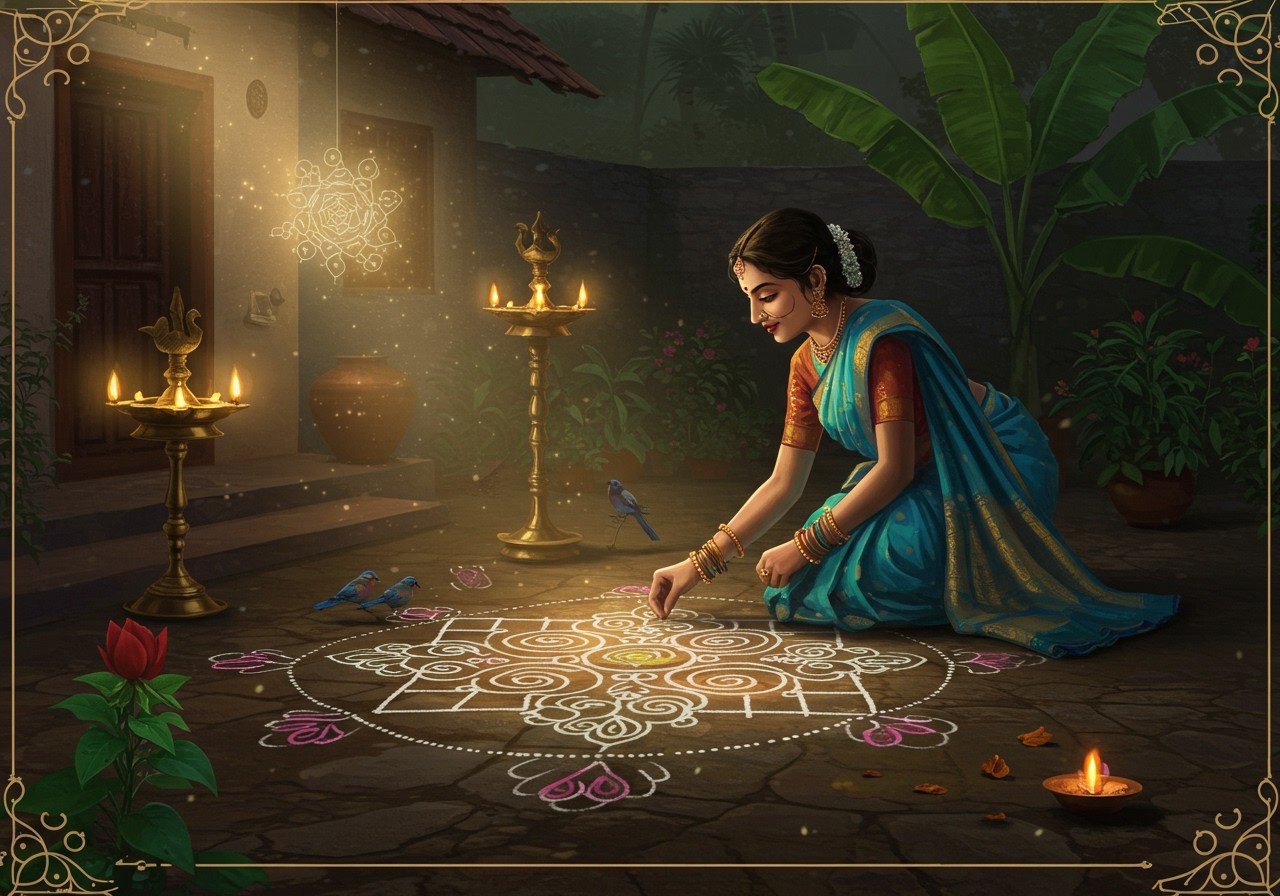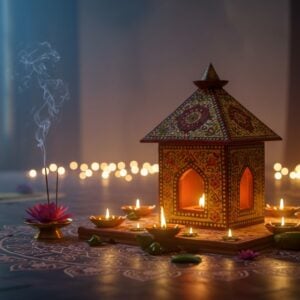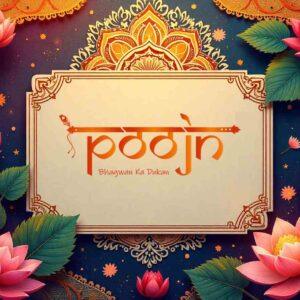
Immerse yourself in the vibrant world of Kolam, an ancient Indian art form that graces the thresholds of homes across South India. Kolam holds deep cultural and spiritual significance, rooted in Indian tradition and cherished for generations. It’s more than just decoration; it’s a daily ritual, a symbol of auspiciousness, a reflection of the harmony between beauty and devotion.
Understanding the Essence of Kolam
Kolam, meaning “beauty” or “form” in Tamil, originates from ancient Tamil Nadu. Traditionally created with materials like rice flour, chalk powder, or finely ground rock powder, Kolam isn’t merely aesthetically pleasing; it carries a profound symbolic weight. These simple materials represent prosperity and act as a protective barrier against negative energies. Kolam plays an integral role in Indian culture, marking festivals, weddings, and other significant occasions with its unique artistry.
Want to bring the beauty of Kolam into your home? Poojn.in offers premium quality rice flour and other traditional Kolam supplies delivered right to your doorstep. Start your Kolam journey today!
Exploring the Diverse Patterns of Kolam
The beauty of Kolam lies in its diverse range of patterns, each carrying its own cultural and spiritual significance:
- Freehand Kolam: These designs flow freely, symbolizing the vastness of the cosmos and the interconnectedness of all things. Their intricate patterns are a testament to the artist’s creativity and skill.
- Pulli Kolam: Using dots as a foundational grid, Pulli Kolam creates geometric shapes, showcasing mathematical precision and discipline. Each dot and line contribute to a harmonious whole.
- Sikku Kolam: The interlaced loops of Sikku Kolam represent the continuous cycle of life, death, and rebirth, a core concept in Hindu philosophy. The unbroken lines signify the eternal flow of existence.
- Rangoli Kolam: Bursting with vibrant colours, Rangoli Kolam is often used during festivals, expressing joy, celebration, and the vibrant spirit of life. The colours themselves hold symbolic meanings, adding another layer of depth to the art form.
Looking for vibrant colours to create your own Rangoli Kolam? Poojn.in has a wide selection of natural colour powders perfect for adding a touch of festive cheer to your Kolam creations.
Delving into the Symbolism and Significance
Kolam patterns are far more than mere decorations. They are imbued with deep-rooted symbolism, inviting positive energies and blessings into the home. The act of creating a Kolam is a spiritual offering, a way to connect with the divine. The use of rice flour also reflects Hindu principles of ahimsa (non-violence) by providing sustenance for tiny creatures, fostering a sense of harmony with nature.
Beyond its spiritual significance, creating Kolam can be a meditative practice, bringing focus and tranquility to the mind. The rhythmic movements and intricate patterns help to still the thoughts and promote a sense of inner peace.
Kolam as a Daily Ritual: A Connection to Tradition
Drawing Kolam is a daily ritual for many, a practice that signifies discipline and devotion. Often performed before sunrise, it’s a way to begin the day with mindfulness and intention. Women play a vital role in preserving this tradition, passing down the knowledge and skills through generations, ensuring the art form continues to thrive.
Kolam in the Modern World: A Timeless Tradition
Kolam has evolved over time, adapting to the modern world while retaining its core cultural essence. There’s a growing resurgence of interest among younger generations, who are drawn to its artistic and spiritual qualities. Kolam has found its way into contemporary art, fashion, architecture, and even digital media, showcasing its enduring appeal.
Frequently Asked Questions about Kolam
What is the cultural significance of Kolam? Kolam holds deep cultural meaning, symbolizing auspiciousness, prosperity, and the cyclical nature of life. It is a visual prayer, a way to invoke blessings and positive energy into the home.
How does Kolam connect to Indian traditions? Rooted in ancient South Indian customs, Kolam is an integral part of the region’s cultural heritage. It’s a tradition passed down through generations, connecting families and communities to their roots.
What are the different kinds of Kolam patterns? From the simple elegance of Pulli Kolam to the intricate loops of Sikku Kolam and the vibrant hues of Rangoli Kolam, each pattern offers a unique expression of creativity and symbolism.
Why is Kolam considered a daily ritual? The daily practice of Kolam represents discipline, devotion, and a mindful start to the day. It’s a moment of quiet reflection and connection with the divine.
What materials are traditionally used in Kolam? Rice flour is the traditional medium, symbolizing prosperity and serving as an offering to nature’s smaller creatures. Other materials include chalk, coloured powders, and even cow dung for purification.
Begin your own Kolam journey with authentic materials from Poojn.in. We offer a wide variety of traditional Kolam supplies to help you connect with this beautiful art form.


